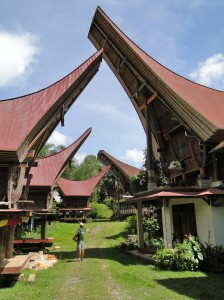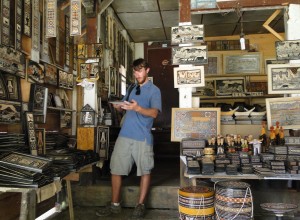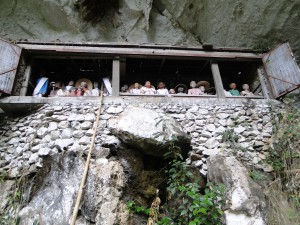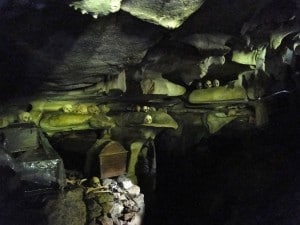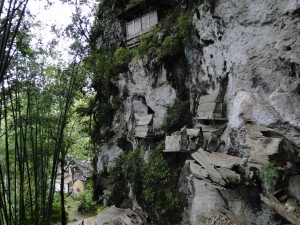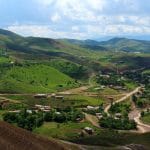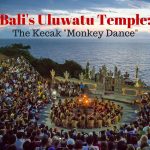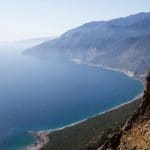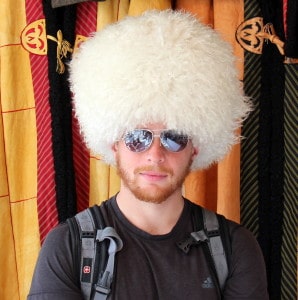Tana Toraja: Land of Funerals
The Torajan Valley is, in a single word, wild. Some of the more remote village are several days’ walk from the nearest road. Traditional funerals can involve the slaughter of hundreds of water buffalo, and similar numbers of pigs. Traces of animism still exist within local religious practices.
The most obvious difference, arriving in the area, is the local architecture. Buffalo are somewhat revered by the Torajans, and so the houses are traditionally built with the roof in the shape of a buffalo’s horns. Greg and I had both just read a book about how practical considerations effect cultural norms, and decided that this evolved as a way to dry rice effectively in a very wet place.
Between drinking massive amounts of local coffee we managed to hike for two days, attend two funerals as tourists (yes, really), explore cliff-side and cave-buried grave sites, and eat quite a bit of buffalo. Dark tourism at its best, complete with a bit of video action. They really put the ‘fun’ in ‘funeral’ here.
Tana Toraja Graves
Before we get to funereal customs, we’re first going to talk about burial.
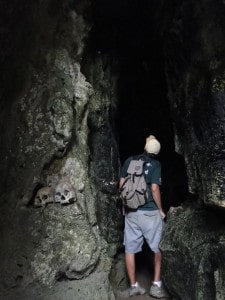
If a family cannot afford a funeral immediately after the death, or if the entire extended family cannot attend the funeral (with many Indonesians being immigrant workers and overseas students, this is sometimes a serious problem) then the dead family member is treated simply as if they were ill. Chemicals are injected to prevent decay, and the body is placed in bed in the house as if they were still alive. Our guide for hiking, Fa’Ri, said that when he was y0ung his dead grandmother had ‘lived’ with his family for almost two years.
Before the funeral, a wooden likeness of the deceased is traditionally carved to sit over the burial site with the rest of the village’s ancestors. I couldn’t get any very good close-up pictures, but some of the Tau-Tau statues are exceedingly lifelike.
Several days after the funeral, the coffin is carried to the burial site. Though many Torajan villages are wedged into mountain valleys where most available open land is dedicated to farming, some have developed other means of laying the dead to rest.
In Londa village, coffins are carried into nearby caves and there deposited with offerings. Once a year, families remove and clean the coffins, and then return them to the caves.
In Ke’te Kesu, where the cave walkways are too narrow to negotiate with a coffin, graves are suspended from the cliffside overlooking the village.
Generally, though, one must die and have a funeral before one is buried. More on that note below.
Tana Toraja Funeral Slaughter
This is about to get graphic and bloody. Fair warning.
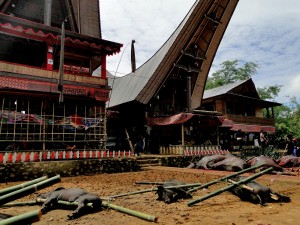


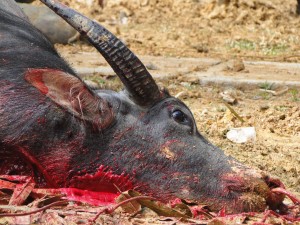
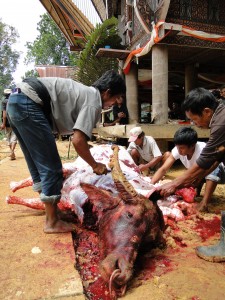
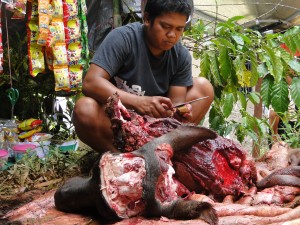

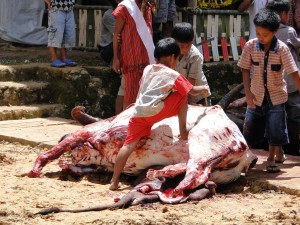
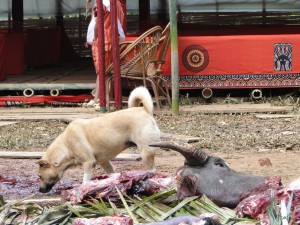
A Tana Toraja Funeral, slaughter central, is one of those unique events you stumble across while traveling and never forget.
Tana Toraja Funeral Video
As the preceding post illustrates, this is pretty intense. If you’re at work or around small children, I’d suggest watching it later. That warning being said, here you go:
Though I didn’t capture the most epic buffalo as it was going down, this one gives a pretty good idea of what the vibe at the funeral was like. I particularly like when the crowd roars with approval as the blood sprays onto the executioner.
Hiking Tana Toraja
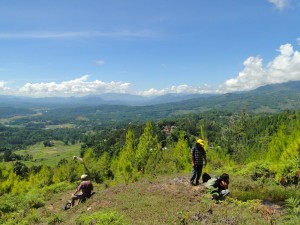
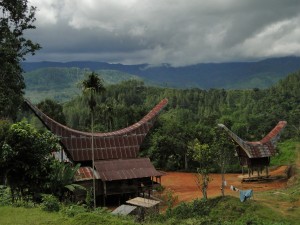
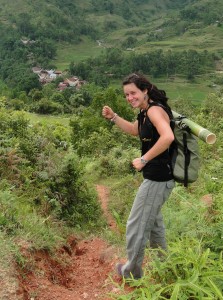
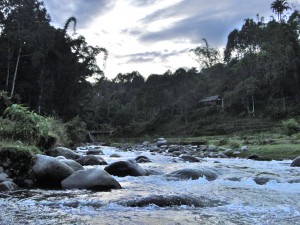
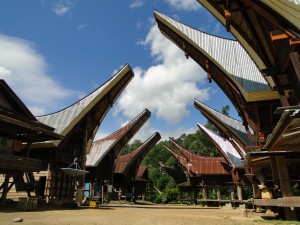
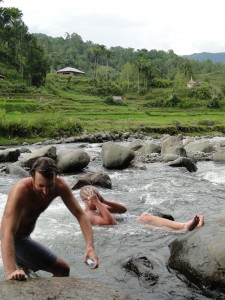
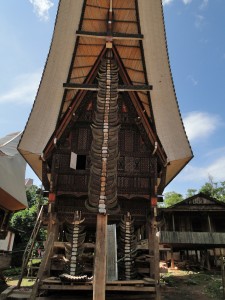
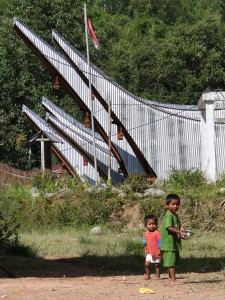
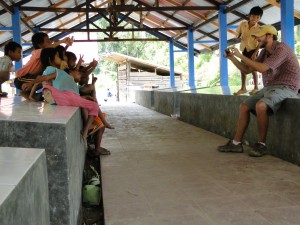
Finally, a bit of dancing at the second funeral Greg and I went to while in Sulawesi. The video has a lot of ambient noise, but then so did the funeral. Aside from the constant slaughtering of water buffalo that goes on as the constantly present background of most of these funerals, you’ll often see a group of local guys dancing and singing together as well to celebrate the spirit of the deceased.
Yes, those dudes on the right are carving at a buffalo. It is still a Torajan funeral, after all.
These funerals, and really the entireity of Torajan society, are a really fascinating look at the mixing of traditional animist practices with more recent additions of Christianity to the cultural fabric. To an outsider of this community raised in traditional Western christianity this is miles away, but of course thats part of the appeal!
One caveat, in case you weren’t already aware: these funerals can get gory. The first one I went to was accompanied by a British girl (who, admittedly, was a vegetarian) that couldn’t handle the blood and slaughter and left after no more than 5 or 10 minutes. If you’re going to trek all the way up to Tana Toraja for these funerals, make sure you have a clear idea what you’re getting yourself into.
—–
Want to visit a Torajan funeral, but uncomfortable doing it on your own? Check out GetYourGuide. They offer a number of tours through Indonesia, and sometimes having a guide around here can be a welcome way to understand more about the culture and make sure you don’t offer offense to locals at what can obviously be quite an emotional event. At the first least, make sure to pick up a travel guide or phrase book to at least learn what you can about the local culture and a few words to prepare yourself with.
——
We arranged our guides locally in Rantepao. If you’re in a hurry, though, check out the options available on GetYourGuide.
—–
Hoping to visit a Tana Toraja Funeral, but uncomfortable with the idea of just showing up on your own? Check out GetYourGuide.
